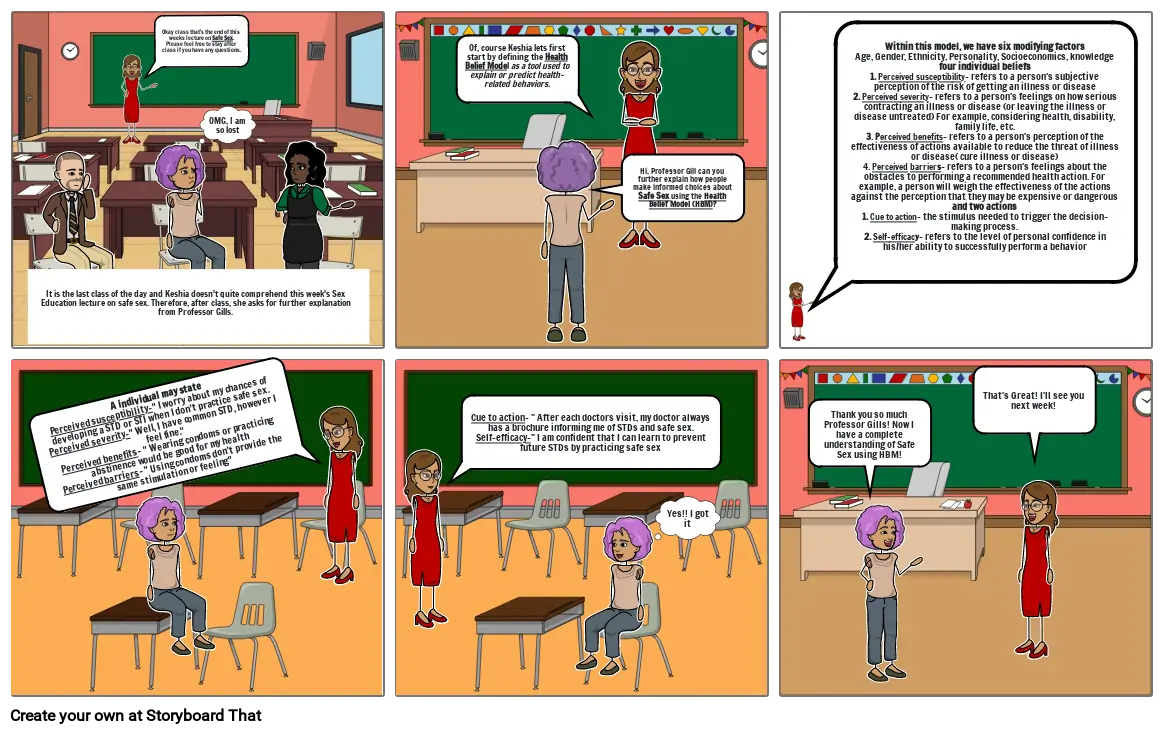Unknown Story

Storyboard Text
- It is the last class of the day and Keshia doesn't quite comprehend this week's Sex Education lecture on safe sex. Therefore, after class, she asks for further explanation from Professor Gills.
- Okay class that's the end of this weeks lecture on Safe Sex. Please feel free to stay after class if you have any questions.
- OMG, I am so lost
- Of, course Keshia lets first start by defining the Health Belief Model as a tool used to explain or predict health-related behaviors.
- Hi, Professor Gill can you further explain how people make informed choices about Safe Sex using the Health Belief Model (HBM)?
- Within this model, we have six modifying factorsAge, Gender, Ethnicity, Personality, Socioeconomics, knowledgefour individual beliefs1. Perceived susceptibility- refers to a person's subjective perception of the risk of getting an illness or disease2. Perceived severity- refers to a person's feelings on how serious contracting an illness or disease (or leaving the illness or disease untreated) For example, considering health, disability, family life, etc.3. Perceived benefits- refers to a person's perception of the effectiveness of actions available to reduce the threat of illness or disease( cure illness or disease)4. Perceived barriers- refers to a person's feelings about the obstacles to performing a recommended health action. For example, a person will weigh the effectiveness of the actions against the perception that they may be expensive or dangerousand two actions1. Cue to action- the stimulus needed to trigger the decision-making process.2. Self-efficacy- refers to the level of personal confidence in his/her ability to successfully perform a behavior
- A individual may statePerceived susceptibility- I worry about my chances of developing a STD or STI when I don't practice safe sex.Perceived severity- Well, I have common STD, however I feel fine.Perceived benefits- Wearing condoms or practicing abstinence would be good for my healthPerceived barriers- Using condoms don't provide the same stimulation or feeling
- Cue to action- After each doctors visit, my doctor always has a brochure informing me of STDs and safe sex.Self-efficacy- I am confident that I can learn to prevent future STDs by practicing safe sex
- Yes!! I got it
- Thank you so much Professor Gills! Now I have a complete understanding of Safe Sex using HBM!
- That's Great! I'll see you next week!
Over 30 Million Storyboards Created
No Downloads, No Credit Card, and No Login Needed to Try!
